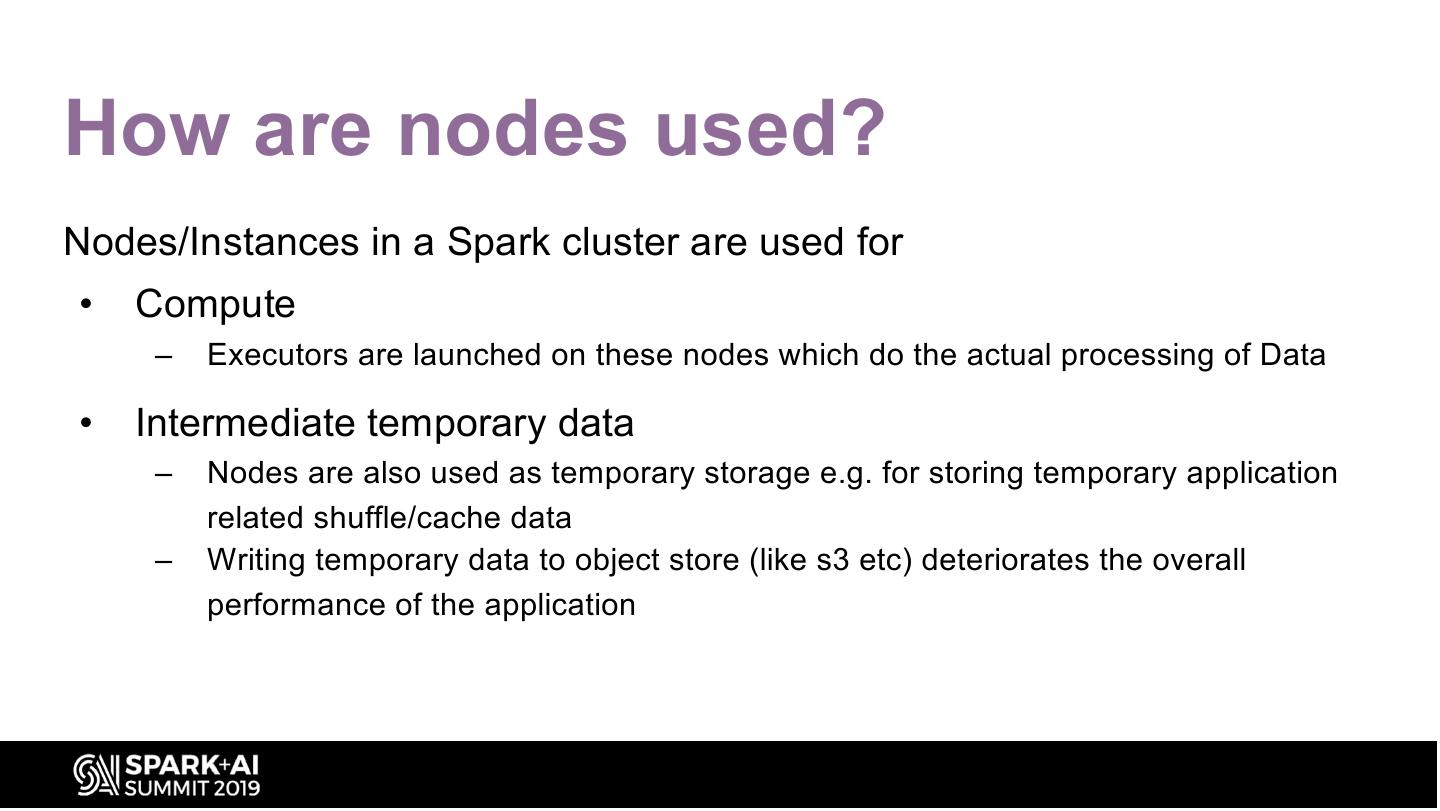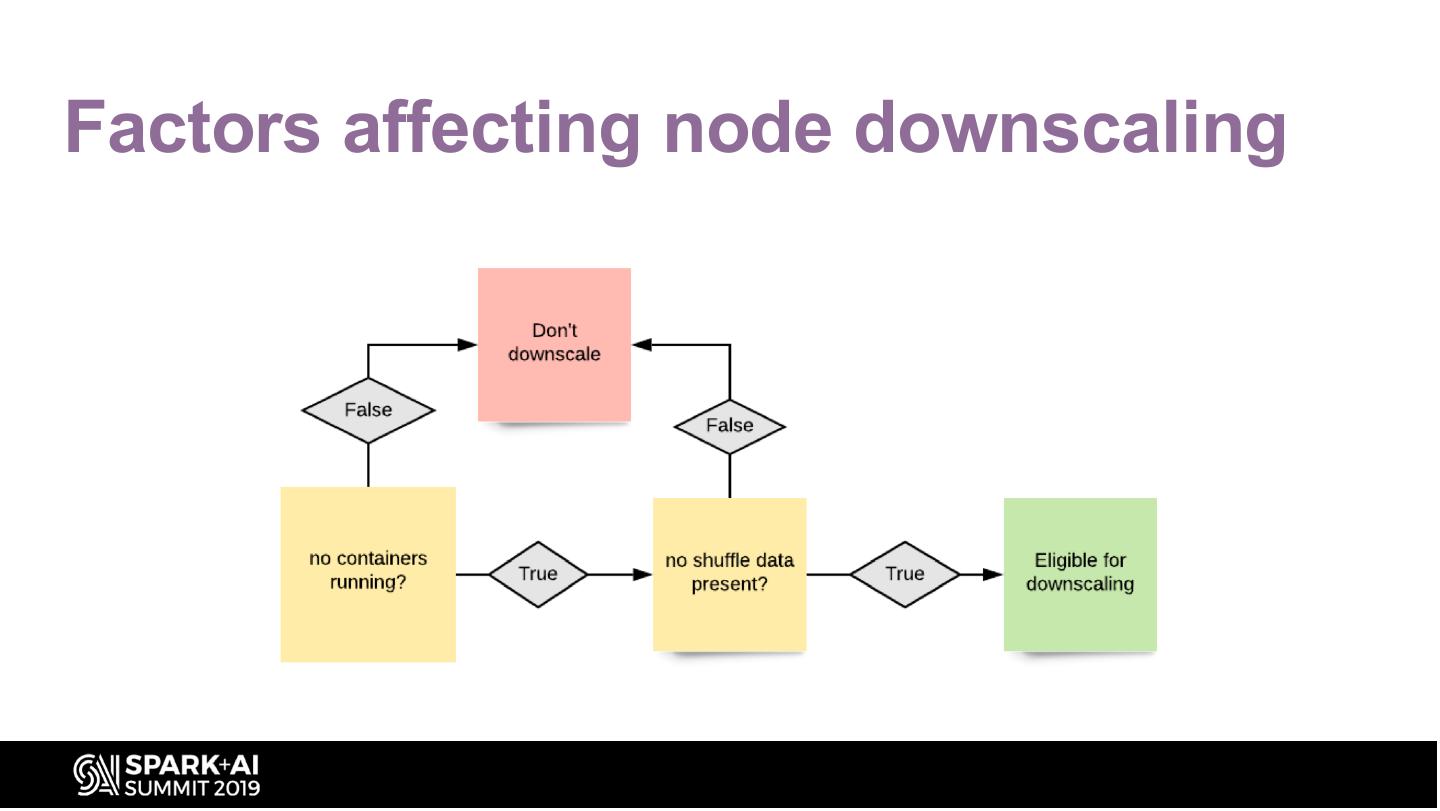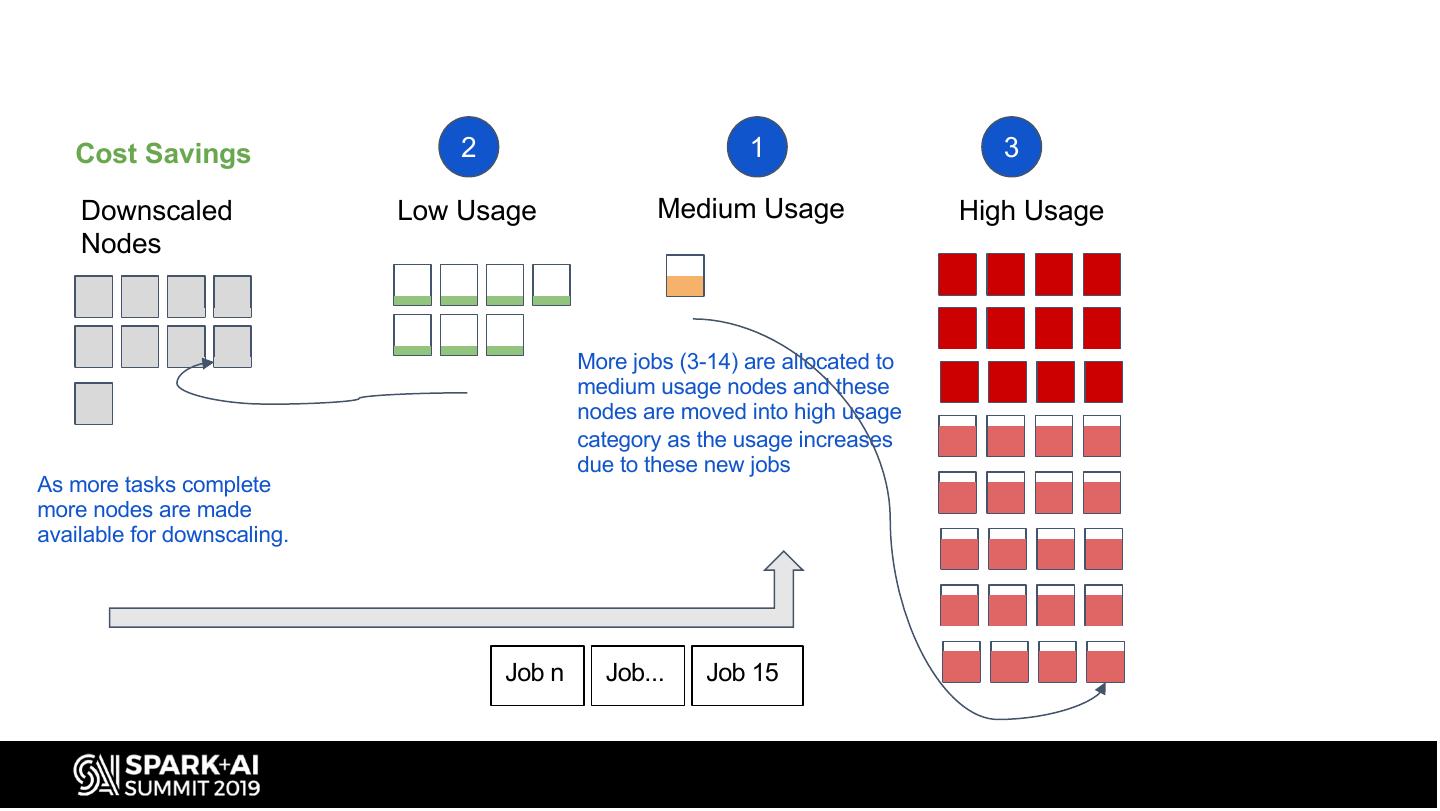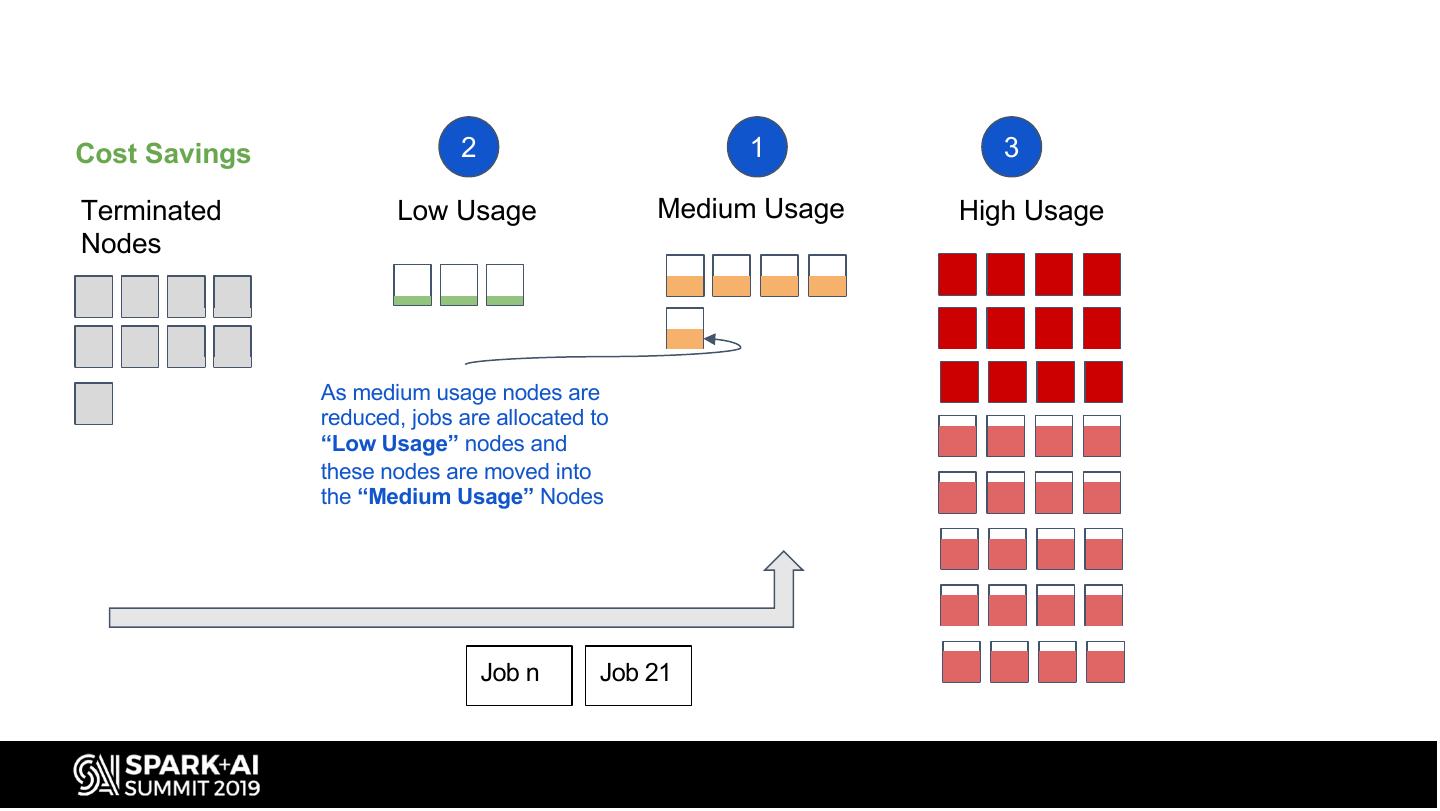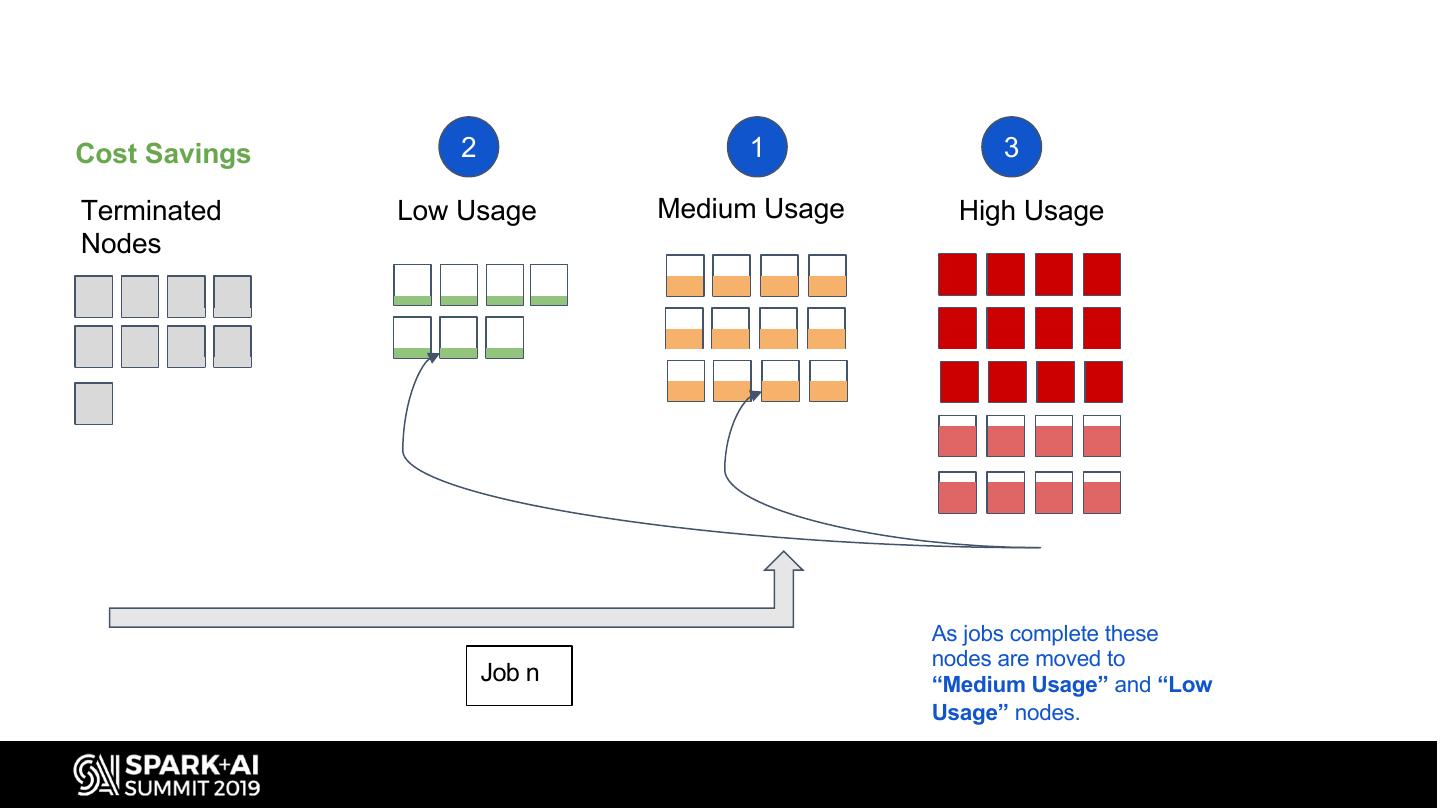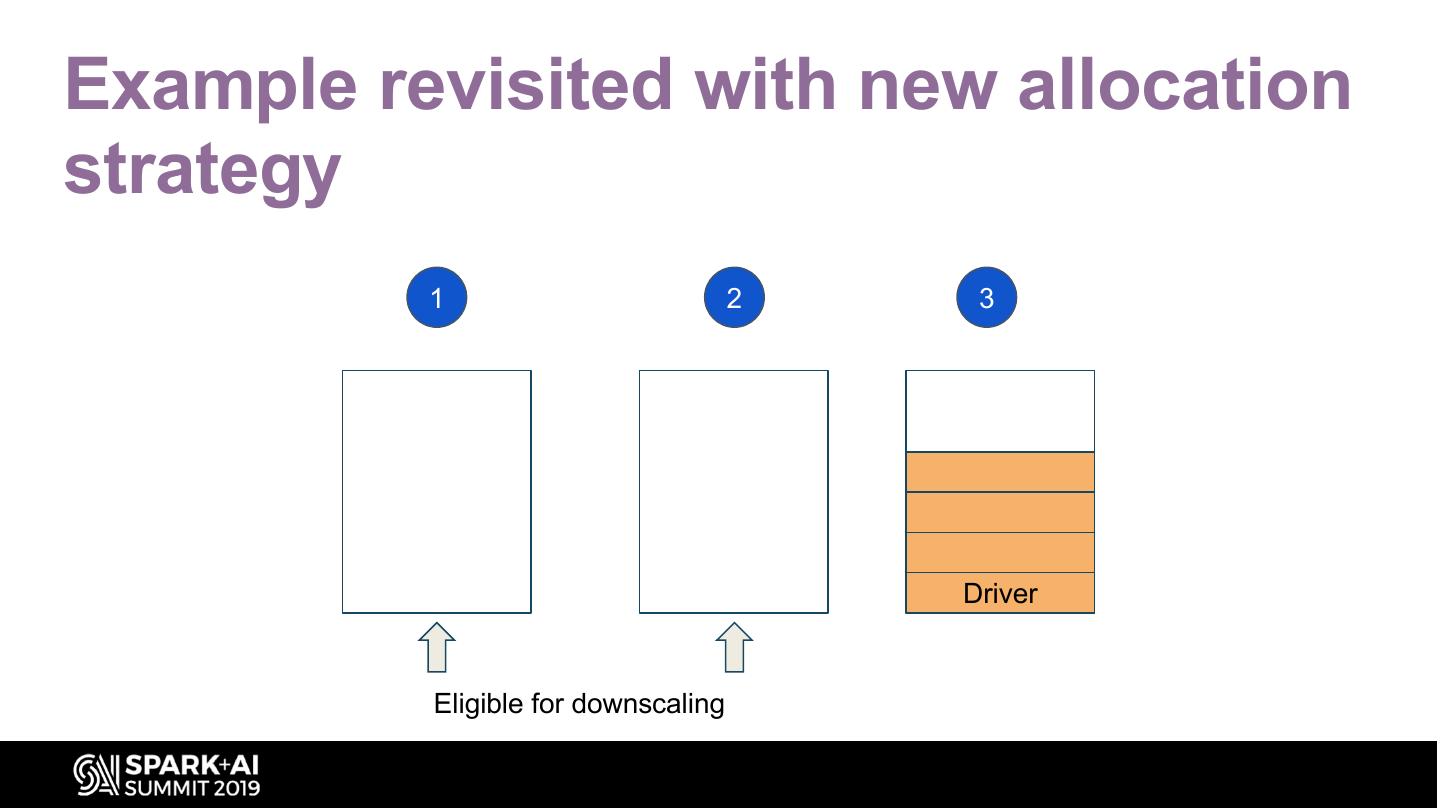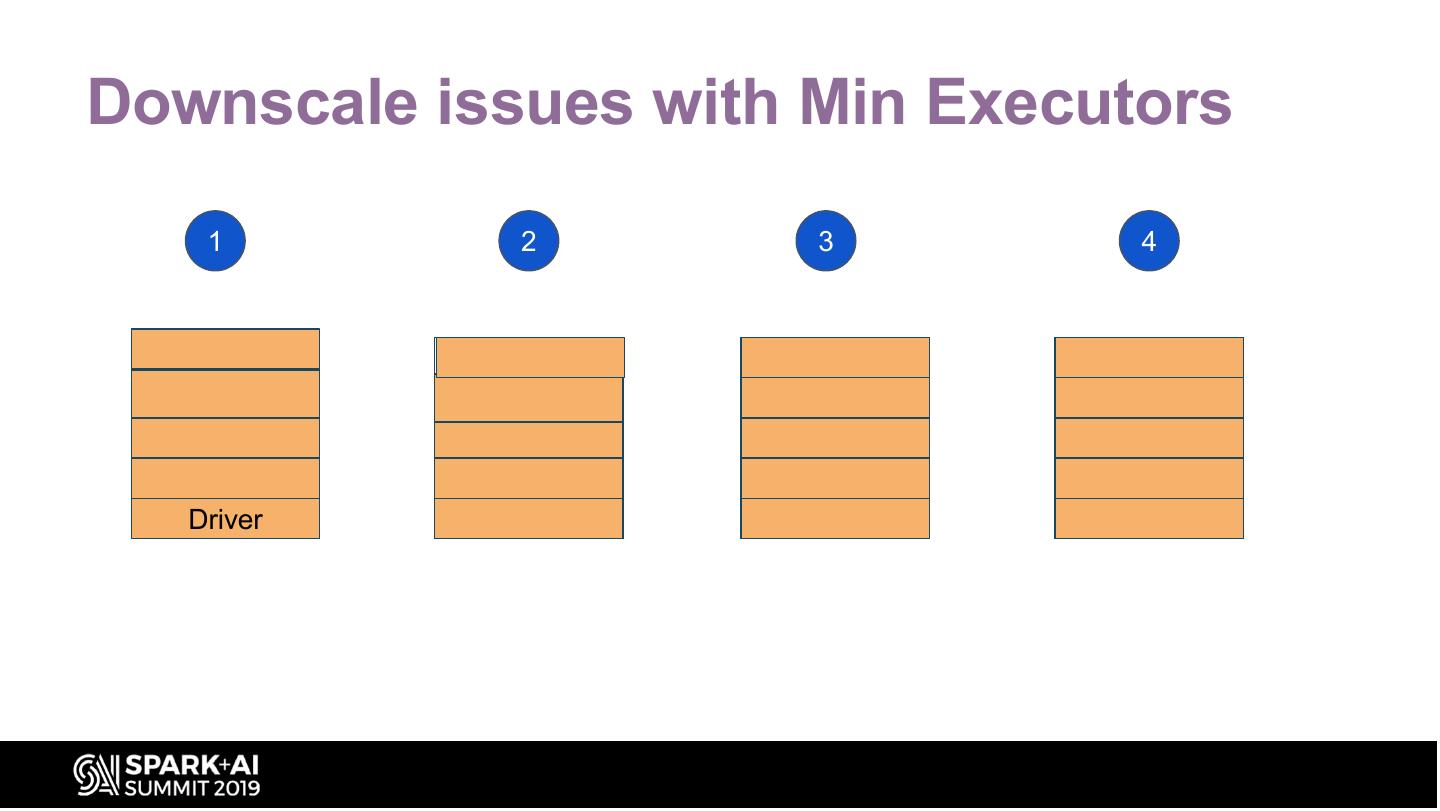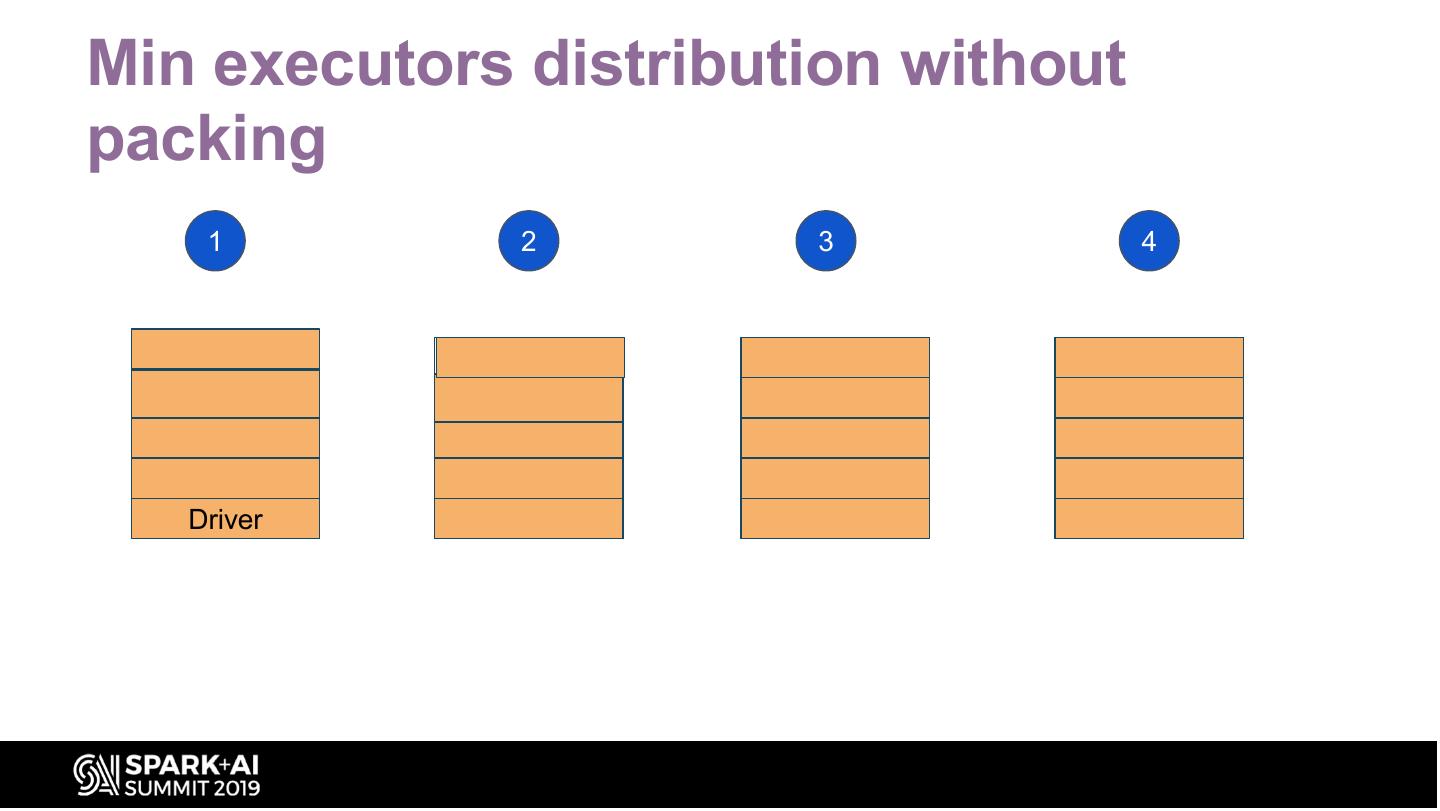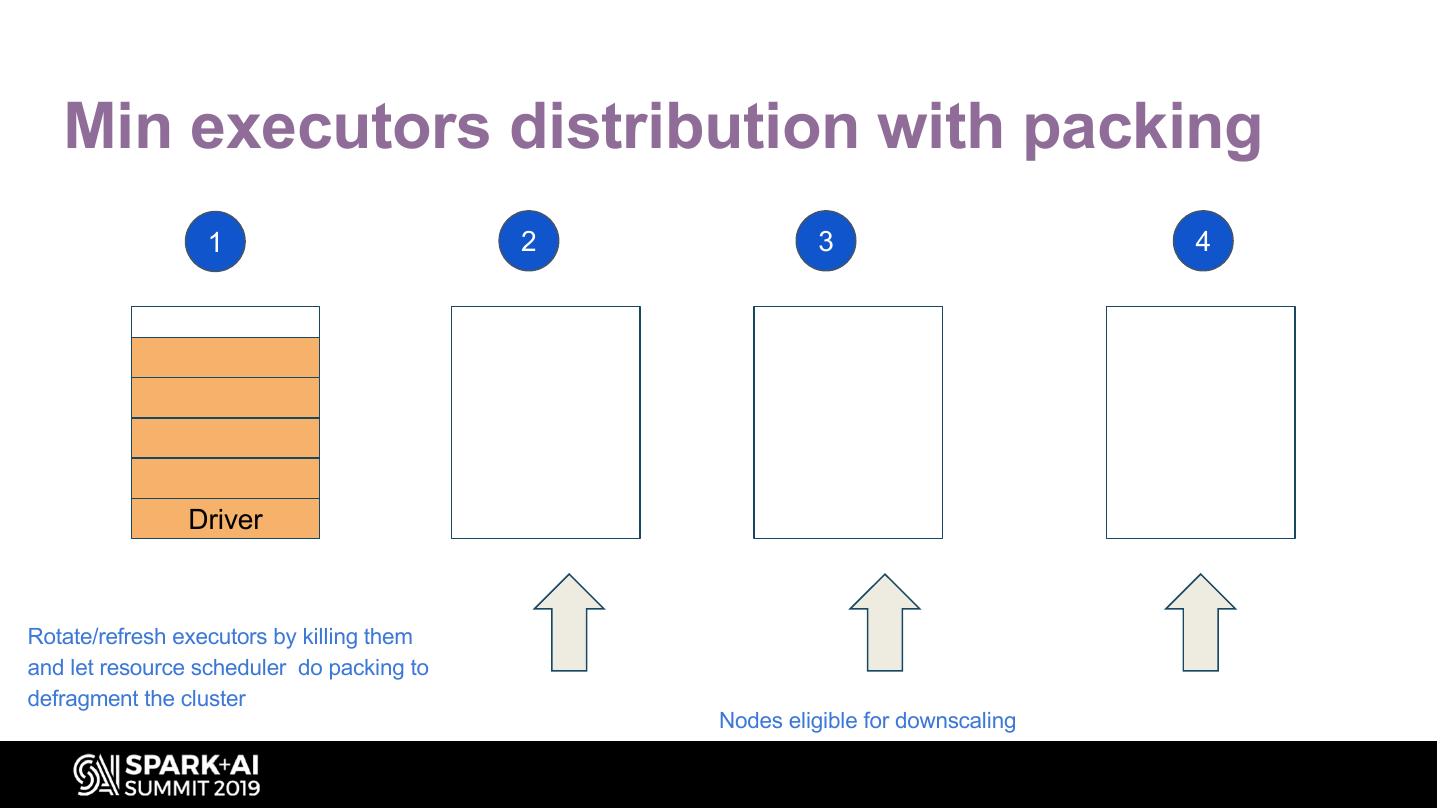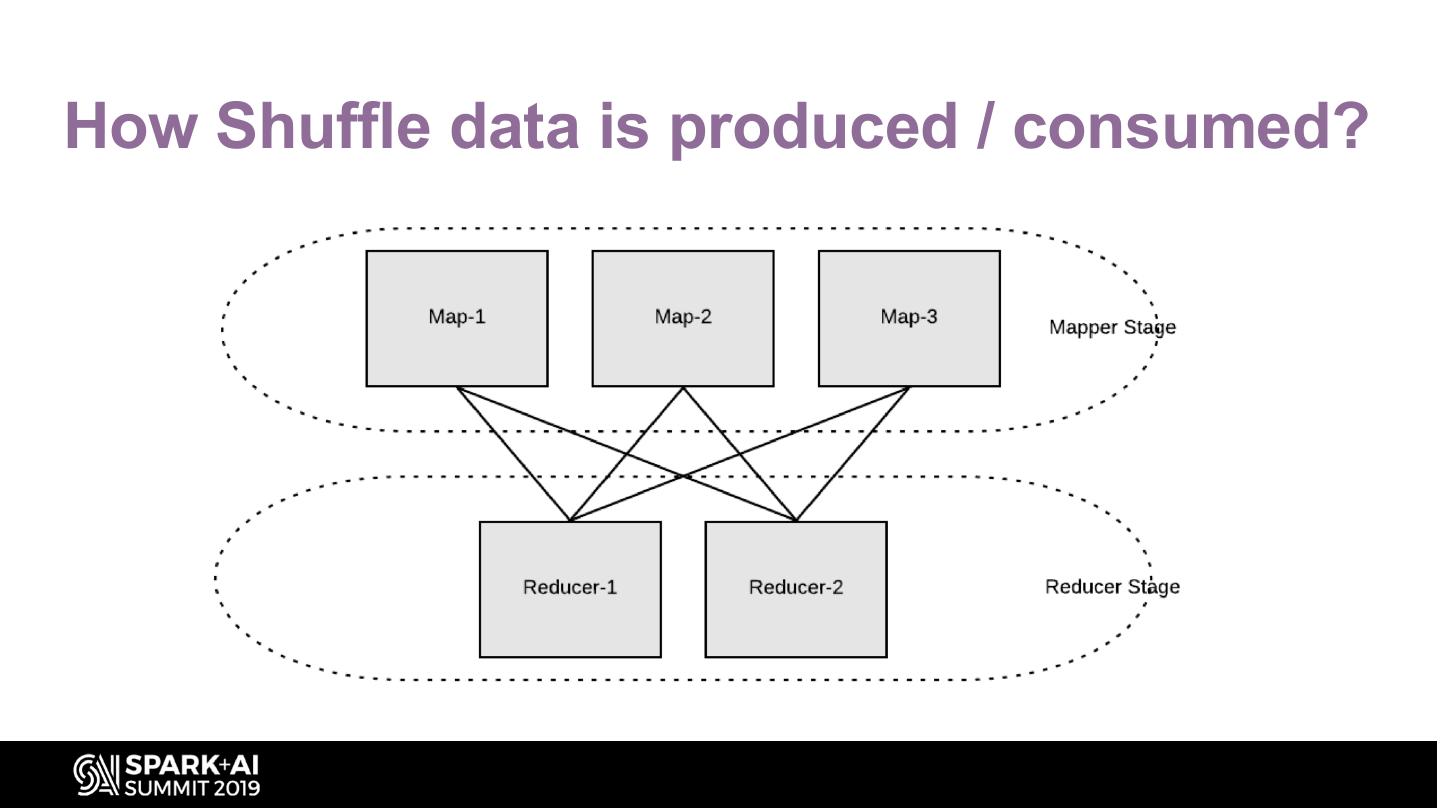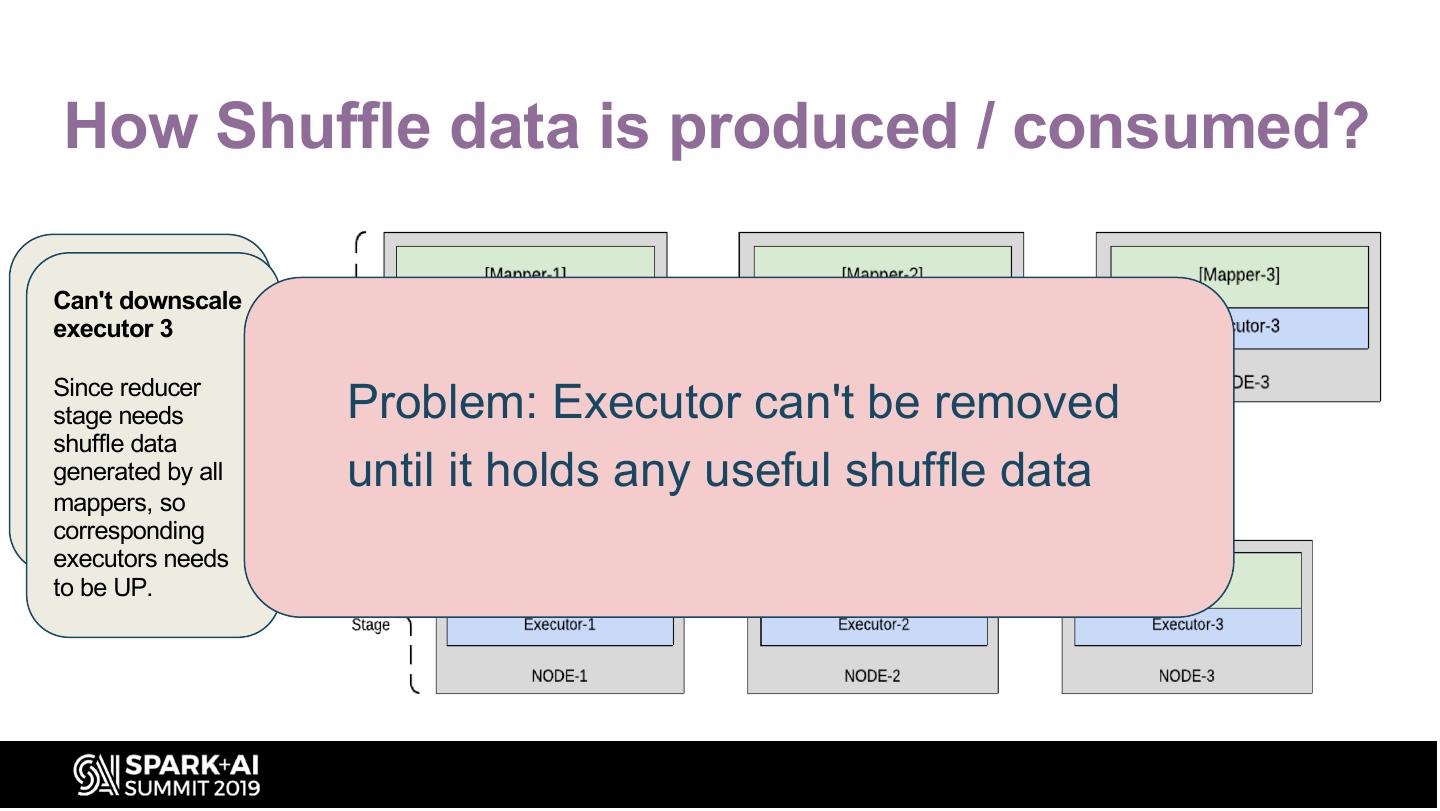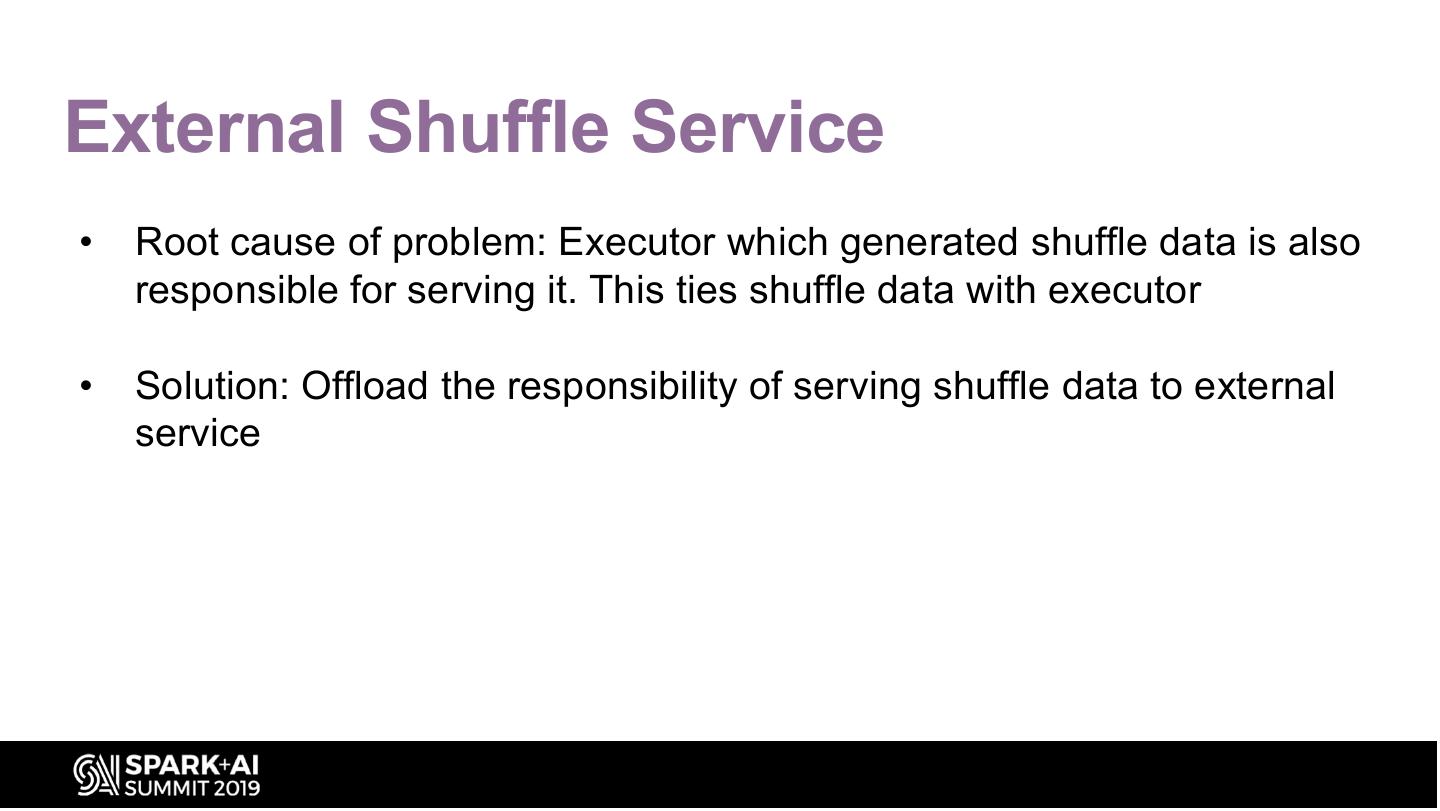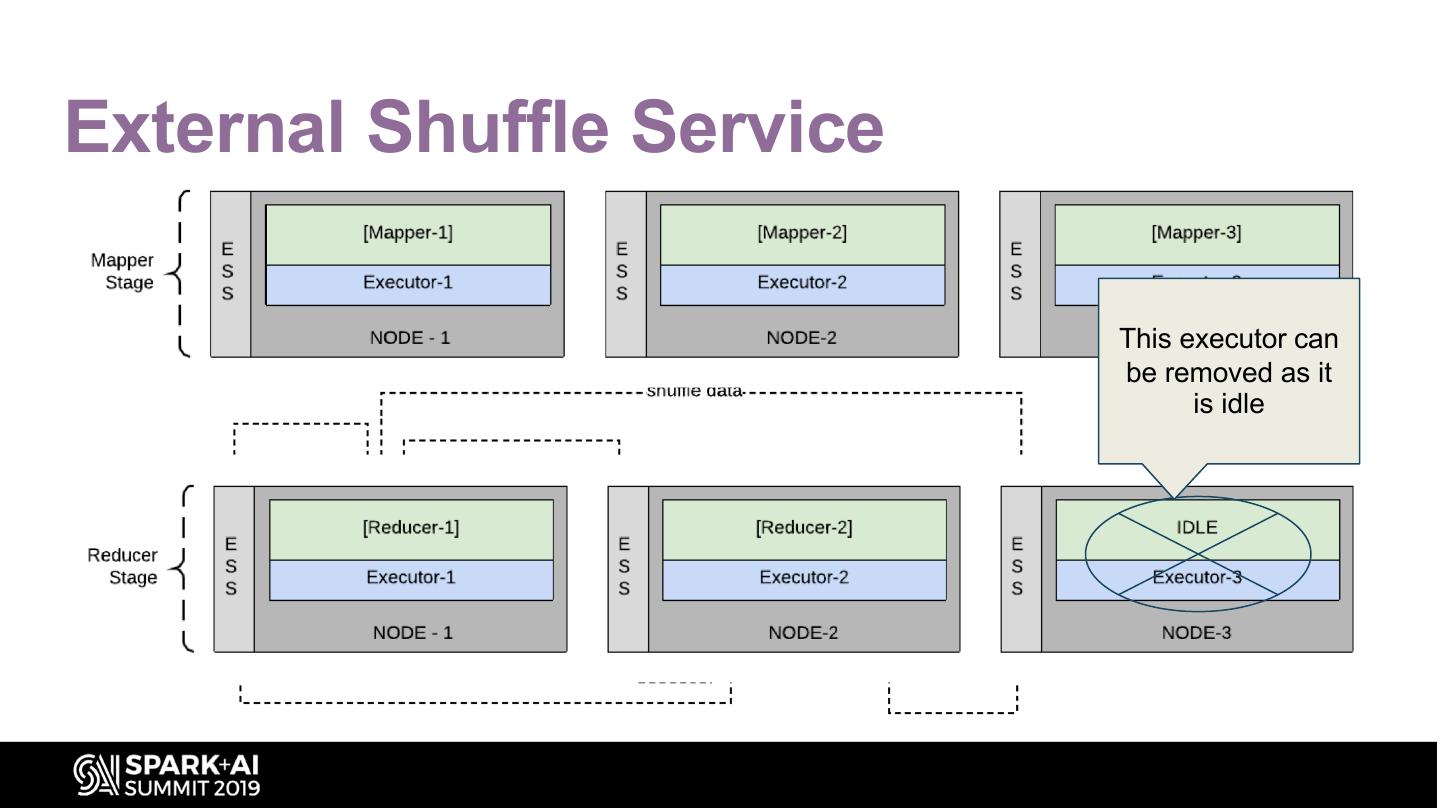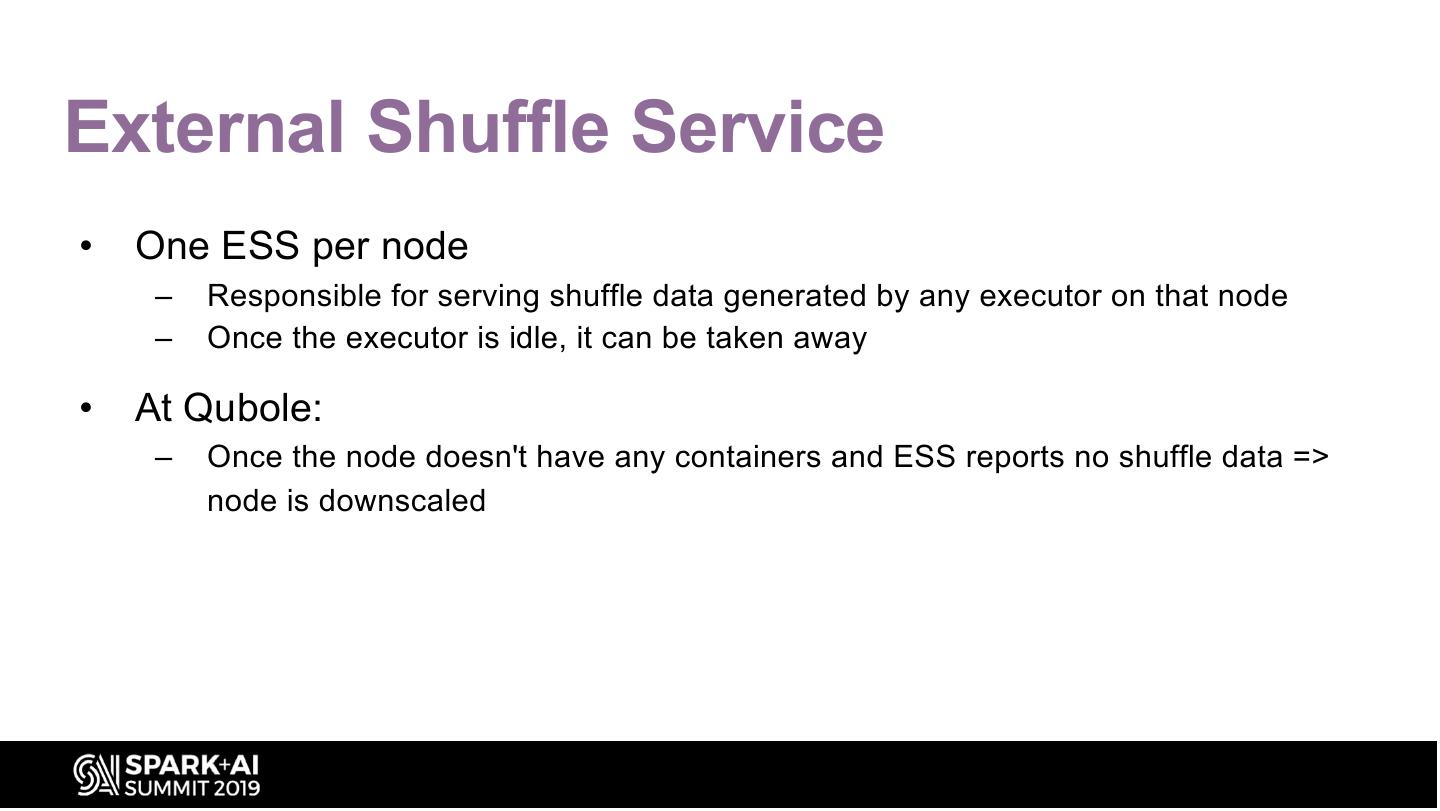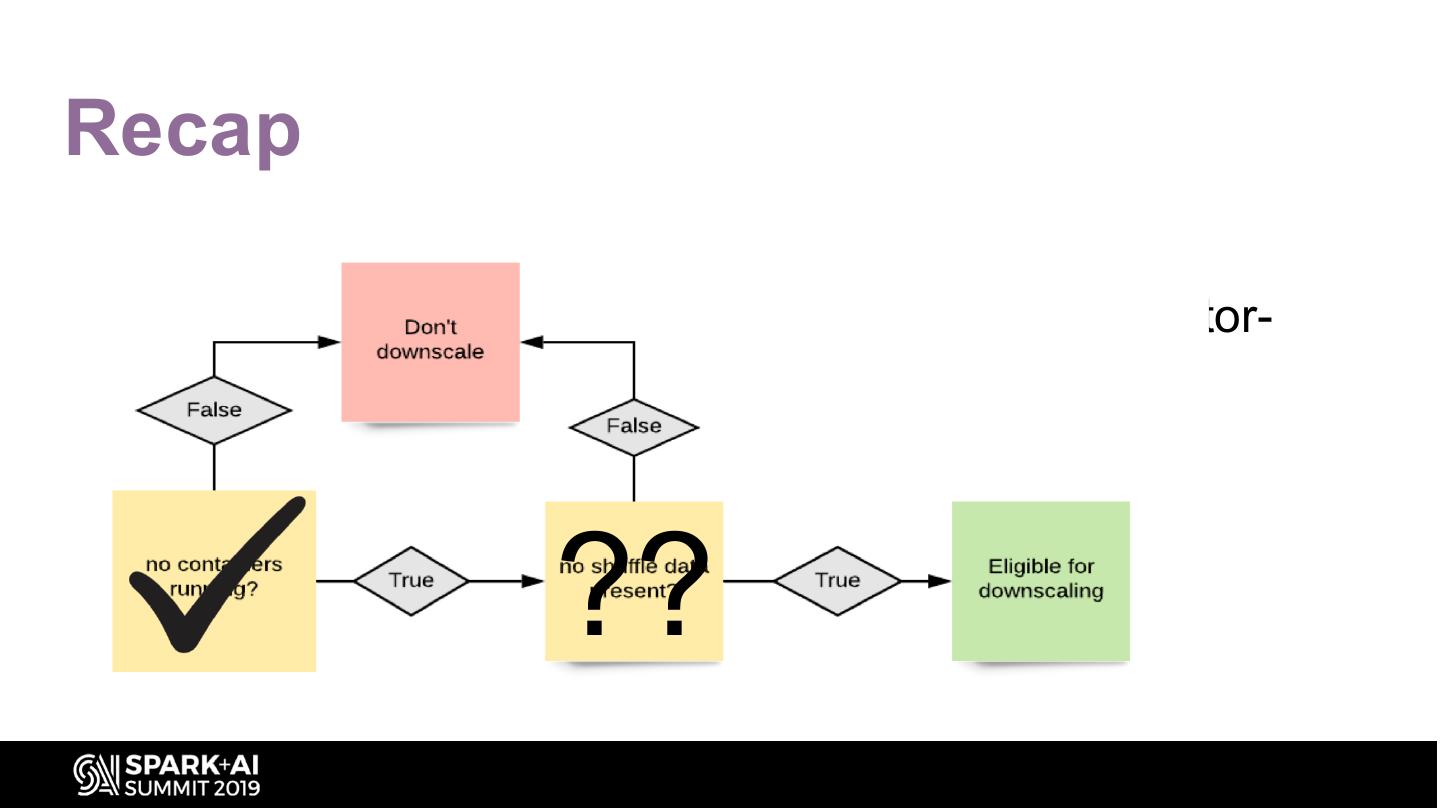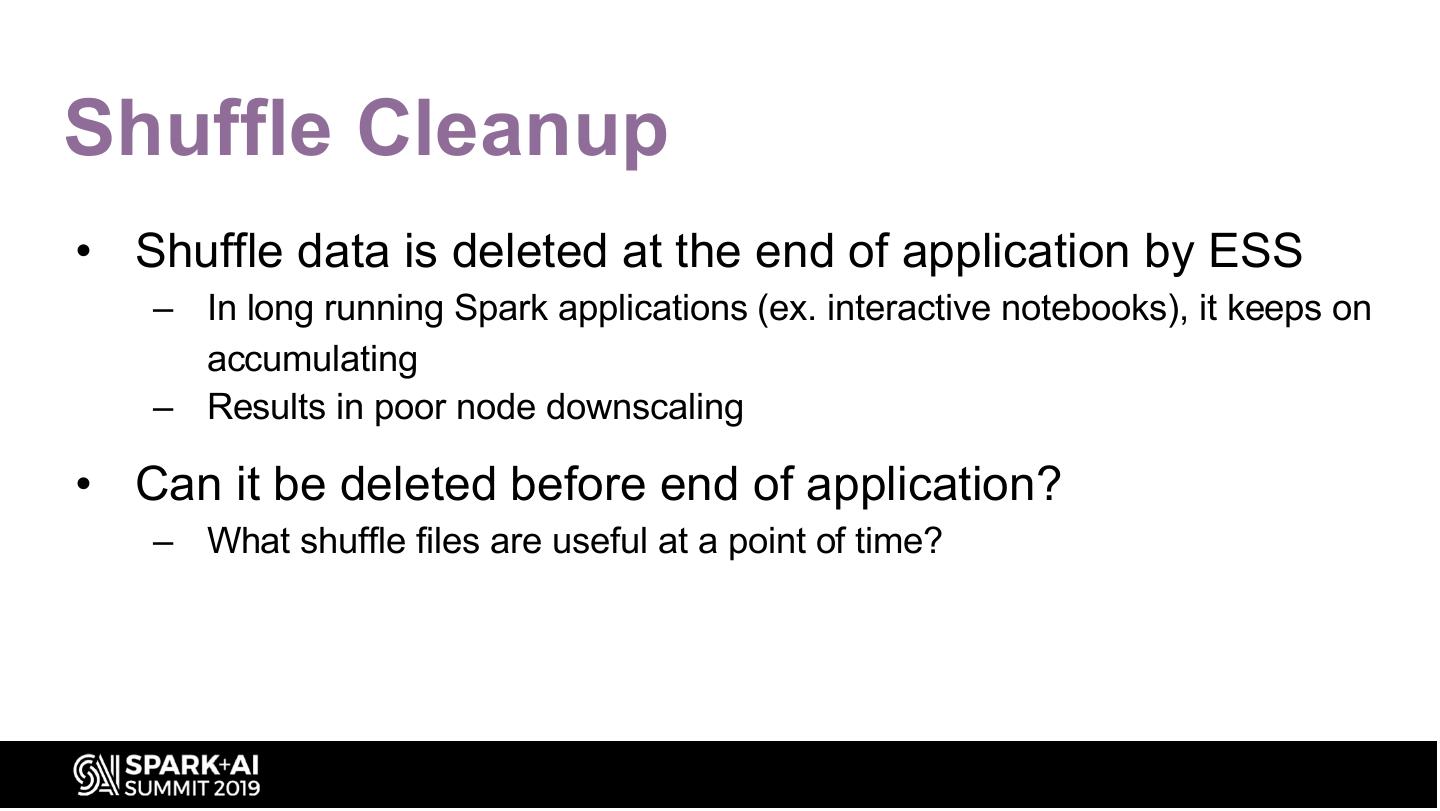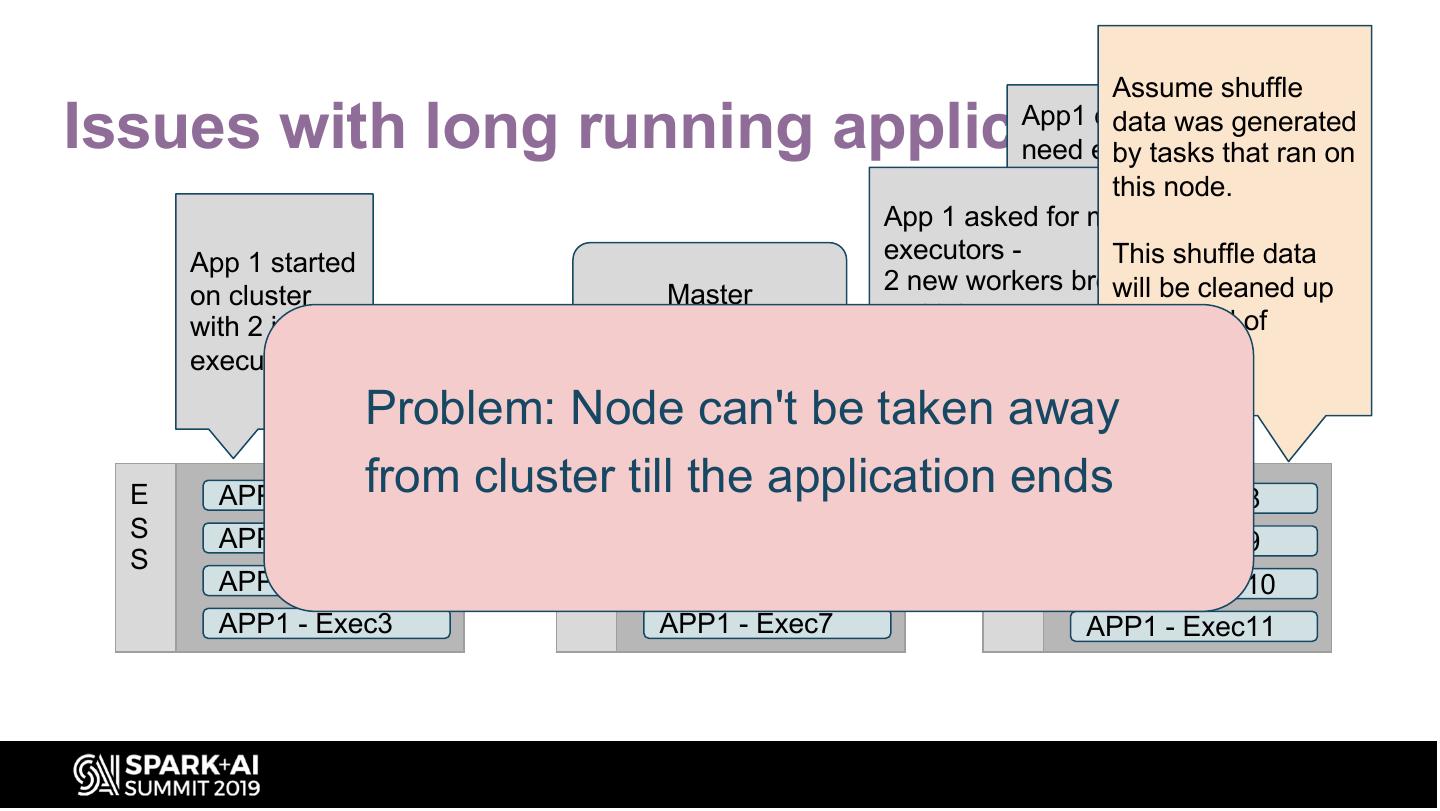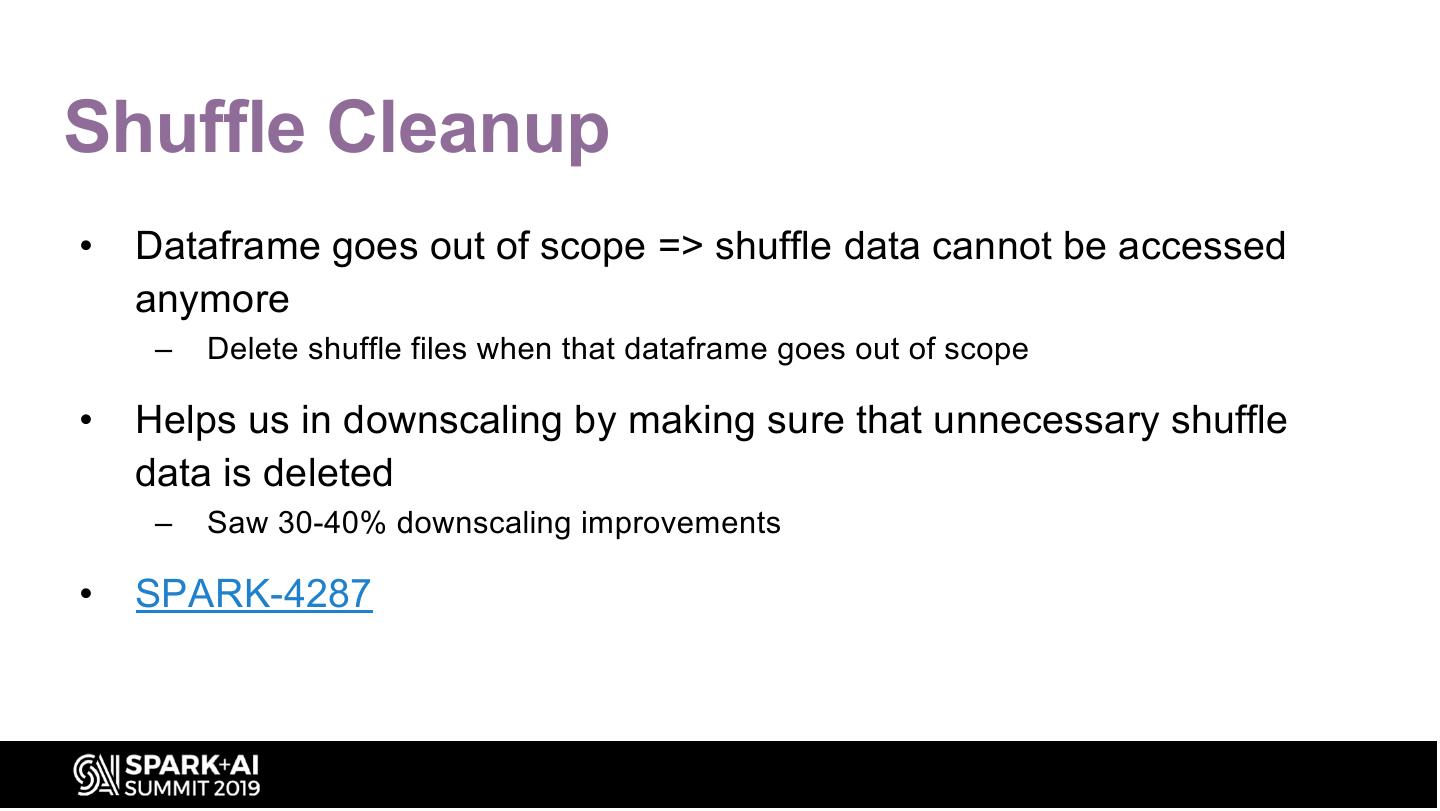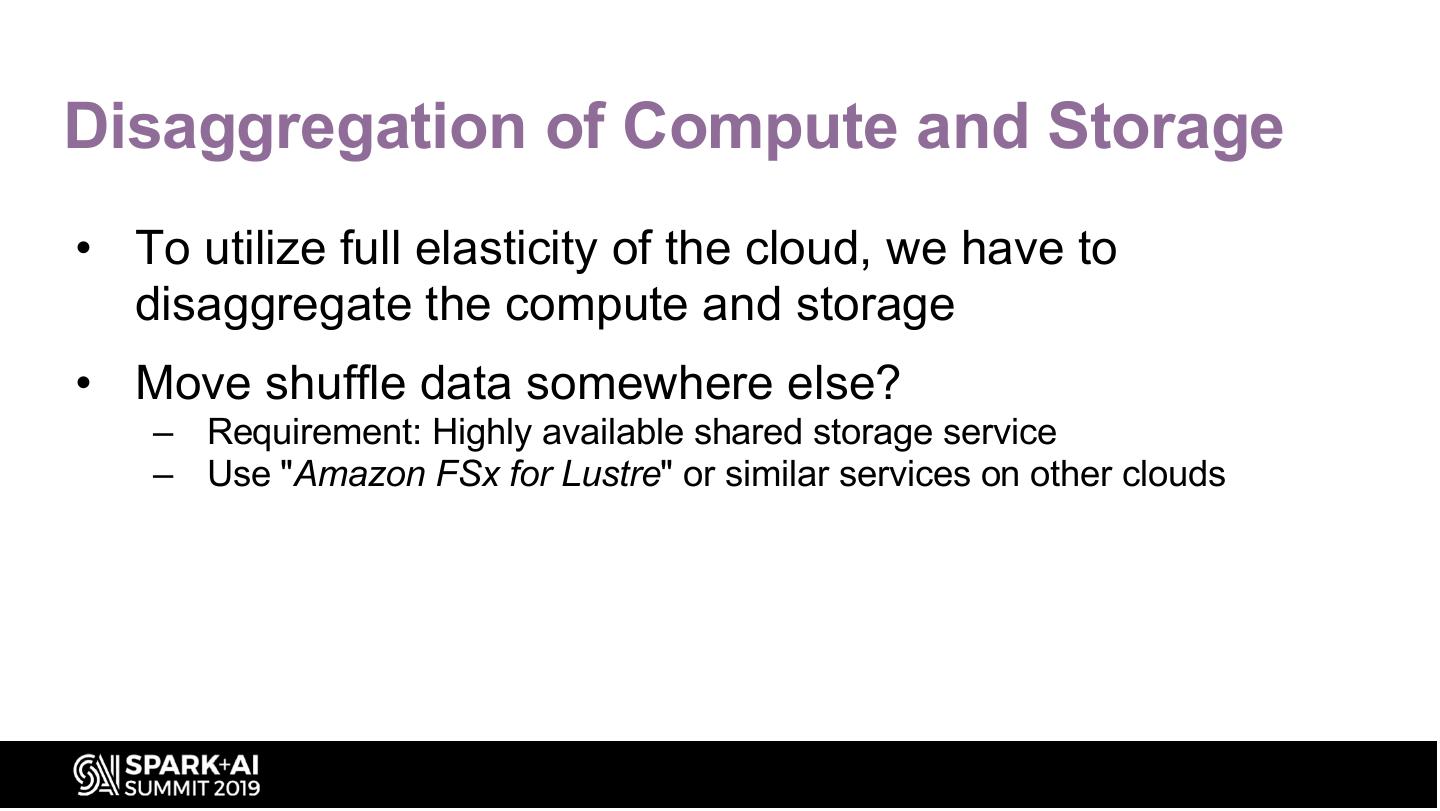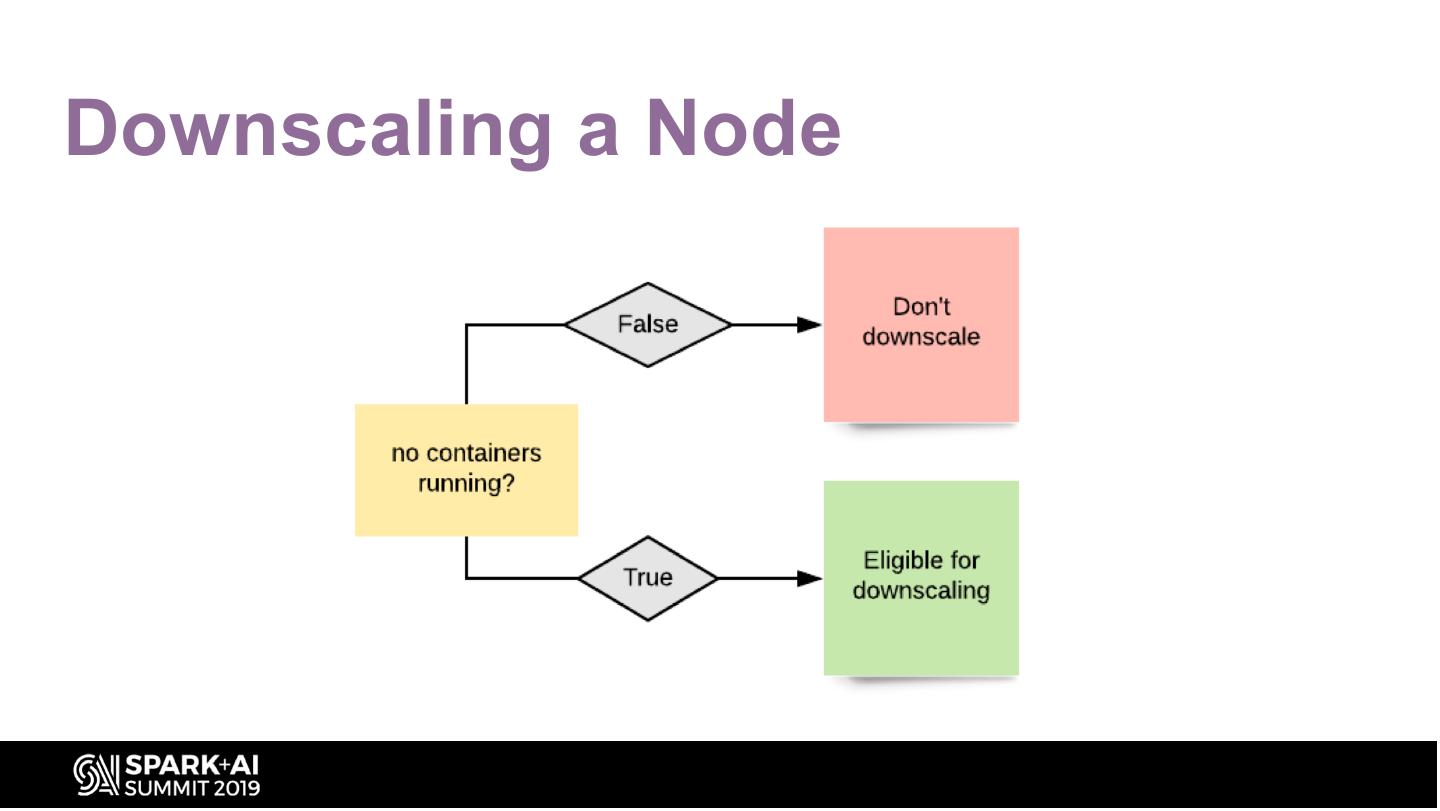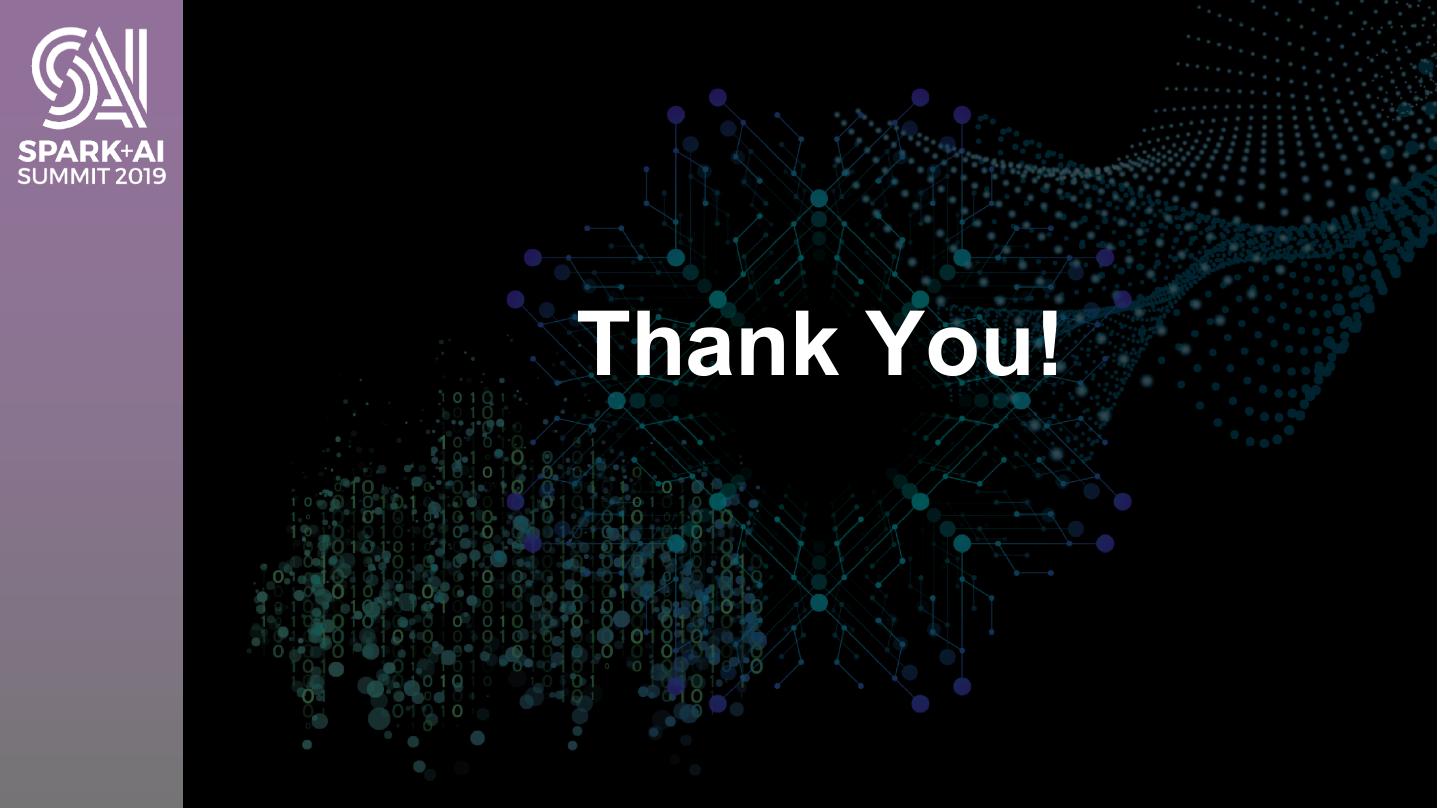- 快召唤伙伴们来围观吧
- 微博 QQ QQ空间 贴吧
- 视频嵌入链接 文档嵌入链接
- 复制
- 微信扫一扫分享
- 已成功复制到剪贴板
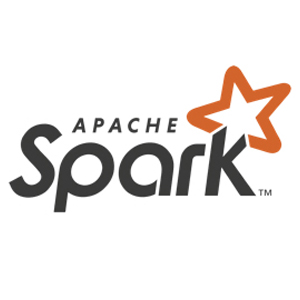

Downscaling - The Achilles heel of Autoscaling Apache Spark
Adding nodes at runtime (Upscale) to already running Spark-on-Yarn clusters is fairly easy. But taking away these nodes (Downscale) when the workload is low at some later point of time is a difficult problem. To remove a node from a running cluster, we need to make sure that it is not used for compute as well as storage.
But on production workloads, we see that many of the nodes can’t be taken away because:
Nodes are running some containers although they are not fully utilized i.e., containers are fragmented on different nodes. Example. – each node is running 1-2 containers/executors although they have resources to run 4 containers.
Nodes have some shuffle data in the local disk which will be consumed by Spark application running on this cluster later. In this case, the Resource Manager will never decide to reclaim these nodes because losing shuffle data could lead to costly recomputation of stages.
In this talk, we will talk about how we can improve downscaling in Spark-on-YARN clusters under the presence of such constraints. We will cover changes in scheduling strategy for container allocation in YARN and Spark task scheduler which together helps us achieve better packing of containers. This makes sure that containers are defragmented on fewer set of nodes and thus some nodes don’t have any compute. In addition to this, we will also cover enhancements to Spark driver and External Shuffle Service (ESS) which helps us to proactively delete shuffle data which we already know has been consumed. This makes sure that nodes are not holding any unnecessary shuffle data – thus freeing them from storage and hence available for reclamation for faster downscaling.
展开查看详情
1 .Downscaling: The Achilles heel of Autoscaling Apache Spark Clusters Prakhar Jain Venkata Sowrirajan #UnifiedDataAnalytics #SparkAISummit
2 .Agenda • Why Autoscaling on cloud? • How nodes in spark cluster are used? • Scale up easy, scale down difficult • Optimizations
3 .Autoscaling on cloud • Cloud for compute provides elasticity – Launch nodes when required – Take them away when you are done – Pay-as-you-go model. No long term commitments. • Autoscaling clusters are needed to use this elastic nature of the cloud – Add nodes to the cluster when required – Remove nodes from the cluster when the cluster utilization is low • Use Cloud object stores to store the actual data and just use the elastic clusters on the cloud for data processing/ML etc
4 .How are nodes used? Nodes/Instances in a Spark cluster are used for • Compute – Executors are launched on these nodes which do the actual processing of Data • Intermediate temporary data – Nodes are also used as temporary storage e.g. for storing temporary application related shuffle/cache data – Writing temporary data to object store (like s3 etc) deteriorates the overall performance of the application
5 .Upscale easy, downscale difficult • Upscaling a cluster on cloud is easy – When the workload on the cluster is high, simply add more nodes – Can be achieved using simple Load balancer • Downscaling nodes are difficult – No running containers – No shuffle/cache data stored on disks – Container fragmentation within cluster nodes – Some nodes have no containers running but are used for storage and vice versa
6 .Factors affecting node downscaling
7 .Terminology Any cluster generally comprises of following entities: • Resource Manager – Administrator for allocating and managing resources in a cluster. e.g. YARN/Mesos etc • Application Driver – Brain of the application – Interacts with Resource Scheduler and negotiates for resources • Ask for executors when needed • Release executors when not needed – e.g. Spark/Tez/MR etc • Executor – Actual worker responsible for running smallest unit of execution - task
8 .Current resource allocation strategy 1 2 3 Problem: Executors fragmentation Current allocation strategy allocates on emptier nodes first Driver
9 .Can we improve? ● Packing of executors
10 . Priority in which jobs are allocated to nodes in Qubole Model 2 1 3 Low Usage Medium Usage High Usage Jobs are prevented from being assigned first to low usage nodes, instead priority is given to medium usage nodes.This ensures that low usage nodes can be downscaled. Job n Job... Job 5 Job 4 Job 3 Job 2 Job 1
11 . Cost Savings 2 1 3 Terminated Low Usage Medium Usage High Usage Nodes In the meanwhile, once the tasks in the low usage nodes are completed, the node is freed up for termination. Job 2 Job 1 Job 1 & 2 allocated to medium usage nodes and these Job n Job... Job 5 Job 4 Job 3 nodes are moved into high usage category as the utilization increases due to these new jobs
12 . Cost Savings 2 1 3 Downscaled Low Usage Medium Usage High Usage Nodes More jobs (3-14) are allocated to medium usage nodes and these nodes are moved into high usage category as the usage increases due to these new jobs As more tasks complete more nodes are made available for downscaling. Job n Job... Job 15
13 .Cost Savings 2 1 3 Terminated Low Usage Medium Usage High Usage Nodes As medium usage nodes are reduced, jobs are allocated to “Low Usage” nodes and these nodes are moved into the “Medium Usage” Nodes Job n Job 21
14 .Cost Savings 2 1 3 Terminated Low Usage Medium Usage High Usage Nodes As jobs complete these nodes are moved to Job n “Medium Usage” and “Low Usage” nodes.
15 .Example revisited with new allocation strategy 1 2 3 Driver Eligible for downscaling
16 .#UnifiedDataAnalytics #SparkAISummit #UnifiedDataAnalytics #SparkAISummit Downscale issues with Min Executors 1 2 3 4 Driver
17 .#UnifiedDataAnalytics #SparkAISummit Min executors distribution without #UnifiedDataAnalytics #SparkAISummit packing 1 2 3 4 Driver
18 . Min executors distribution with packing 1 2 3 4 Driver Rotate/refresh executors by killing them and let resource scheduler do packing to defragment the cluster Nodes eligible for downscaling
19 .How Shuffle data is produced / consumed?
20 . How Shuffle data is produced / consumed? Can't downscale executor 3 Stage-1 (mapper stage) with 3 tasks Since reducer ---------- stage needs Stage-2 Problem: Executor can't be removed shuffle (reducer data stage) with 2by generated tasks all until it holds any useful shuffle data mappers, so corresponding executors needs to be UP.
21 .External Shuffle Service • Root cause of problem: Executor which generated shuffle data is also responsible for serving it. This ties shuffle data with executor • Solution: Offload the responsibility of serving shuffle data to external service
22 .External Shuffle Service This executor can be removed as it is idle
23 .External Shuffle Service • One ESS per node – Responsible for serving shuffle data generated by any executor on that node – Once the executor is idle, it can be taken away • At Qubole: – Once the node doesn't have any containers and ESS reports no shuffle data => node is downscaled
24 .ESS at Qubole • Also tracks information about presence of shuffle data on the node – This information is useful taking decision about node downscaling
25 .Recap • Till now we have seen – How to schedule executors using YARN-executor- packing scheduling strategy – How to re-pack min executors – How to use External shuffle service (ESS) to ?? downscale executors • What about shuffle data?
26 .Shuffle Cleanup • Shuffle data is deleted at the end of application by ESS – In long running Spark applications (ex. interactive notebooks), it keeps on accumulating – Results in poor node downscaling • Can it be deleted before end of application? – What shuffle files are useful at a point of time?
27 . Assume shuffle Issues with long running applications App1 doesn't data was generated need extra by tasks that ran on executorsthis node. App 1 askedanymore for more- App 1 started executors -downscaling This shuffle data 2 new workers brought everything upcleaned up will other be on cluster Master with 2 initial multiple new executors than at theadded min end of executors executors (say application. 2) Problem: Node can't be taken away E from cluster APP1 - Driver E till the- Exec4 APP1 applicationEends APP1 - Exec8 S APP1 - Exec1 S APP1 - Exec5 S APP1 - Exec9 S S S APP1 - Exec2 APP1 - Exec6 APP1 - Exec10 APP1 - Exec3 APP1 - Exec7 APP1 - Exec11
28 .Shuffle reuse in Spark Skipped
29 .Shuffle Cleanup • Dataframe goes out of scope => shuffle data cannot be accessed anymore – Delete shuffle files when that dataframe goes out of scope • Helps us in downscaling by making sure that unnecessary shuffle data is deleted – Saw 30-40% downscaling improvements • SPARK-4287




